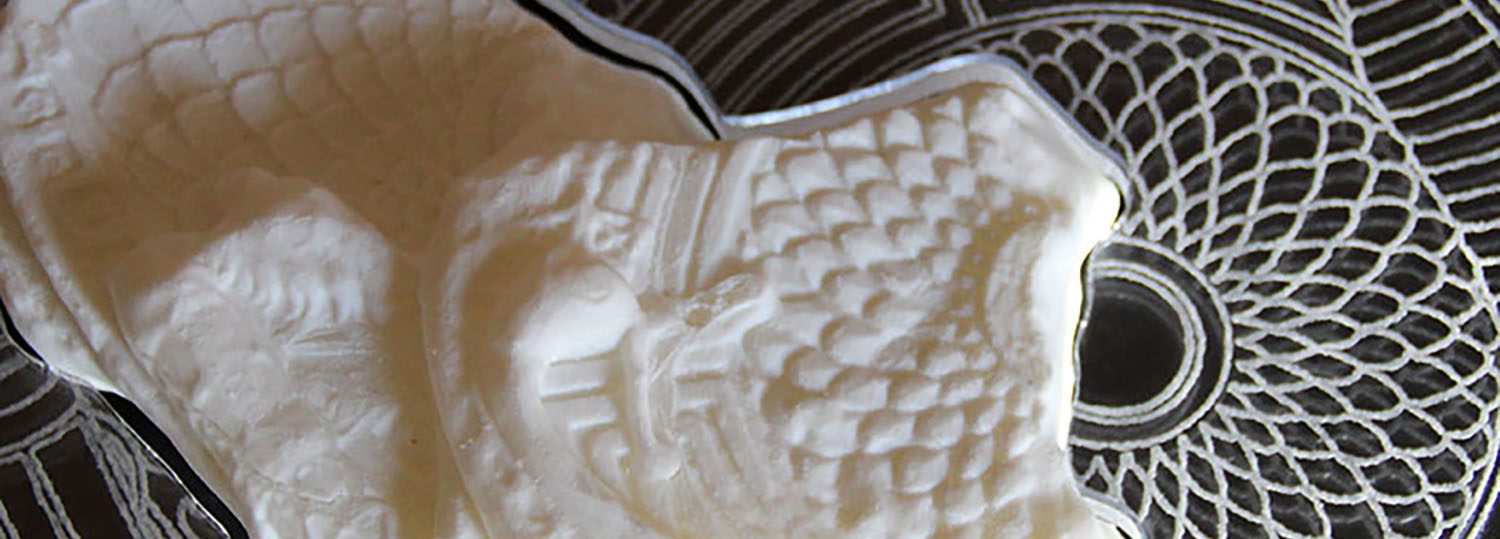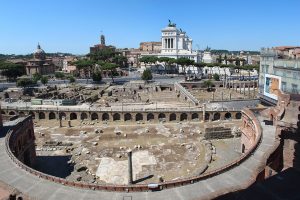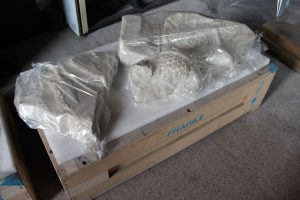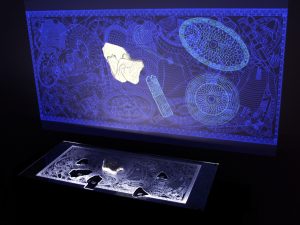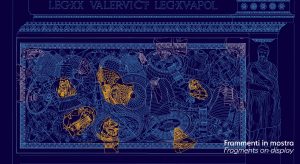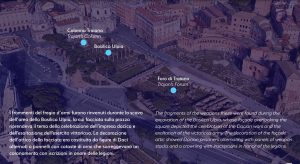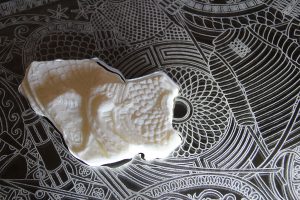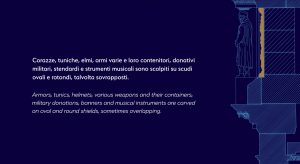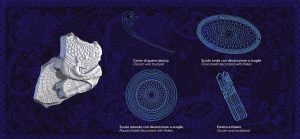The Tangible Interactive Table for Archaeology (TITA): The Weapons Frieze of Trajan’s Forum, created by a NCSU Visual Narrative team headed by Prof. Todd Berreth, in collaboration with Prof. Maurizio Forte at Duke University’s Digg Lab, is part of an exhibition that explores multi-modal, digital means of educating the general public about artifacts and 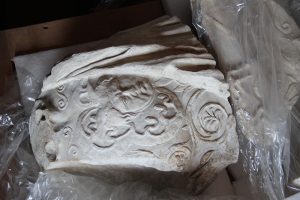 archaeological fragments from the Basilica Ulpia in Rome, the largest basilica in the ancient world. The overall exhibition (curated and developed by Forte’s lab) features installations which use novel modalities, holograms, tangible interfaces, and simulated reconstructions, to contextualize the Trajan Forum and some of the 40,000 architectural fragments of the Basilica Ulpia, hosted at the Museum of the Imperial Forum in Rome, Italy.
archaeological fragments from the Basilica Ulpia in Rome, the largest basilica in the ancient world. The overall exhibition (curated and developed by Forte’s lab) features installations which use novel modalities, holograms, tangible interfaces, and simulated reconstructions, to contextualize the Trajan Forum and some of the 40,000 architectural fragments of the Basilica Ulpia, hosted at the Museum of the Imperial Forum in Rome, Italy.
THE TANGIBLE TABLE
The table is built using an inexpensive, Raspberry Pi micro-computer, Python scripting, and simple electronics. The table and tangible pieces were fabricated entirely using digital “maker” technologies, such as a laser cutter and 3d printer, housed at the College of Design and the NCSU Libraries.
The installation uses 3D printed replicas of fragments of a frieze, depicting ancient weapons and arms from the façade of the basilica, as an novel interactive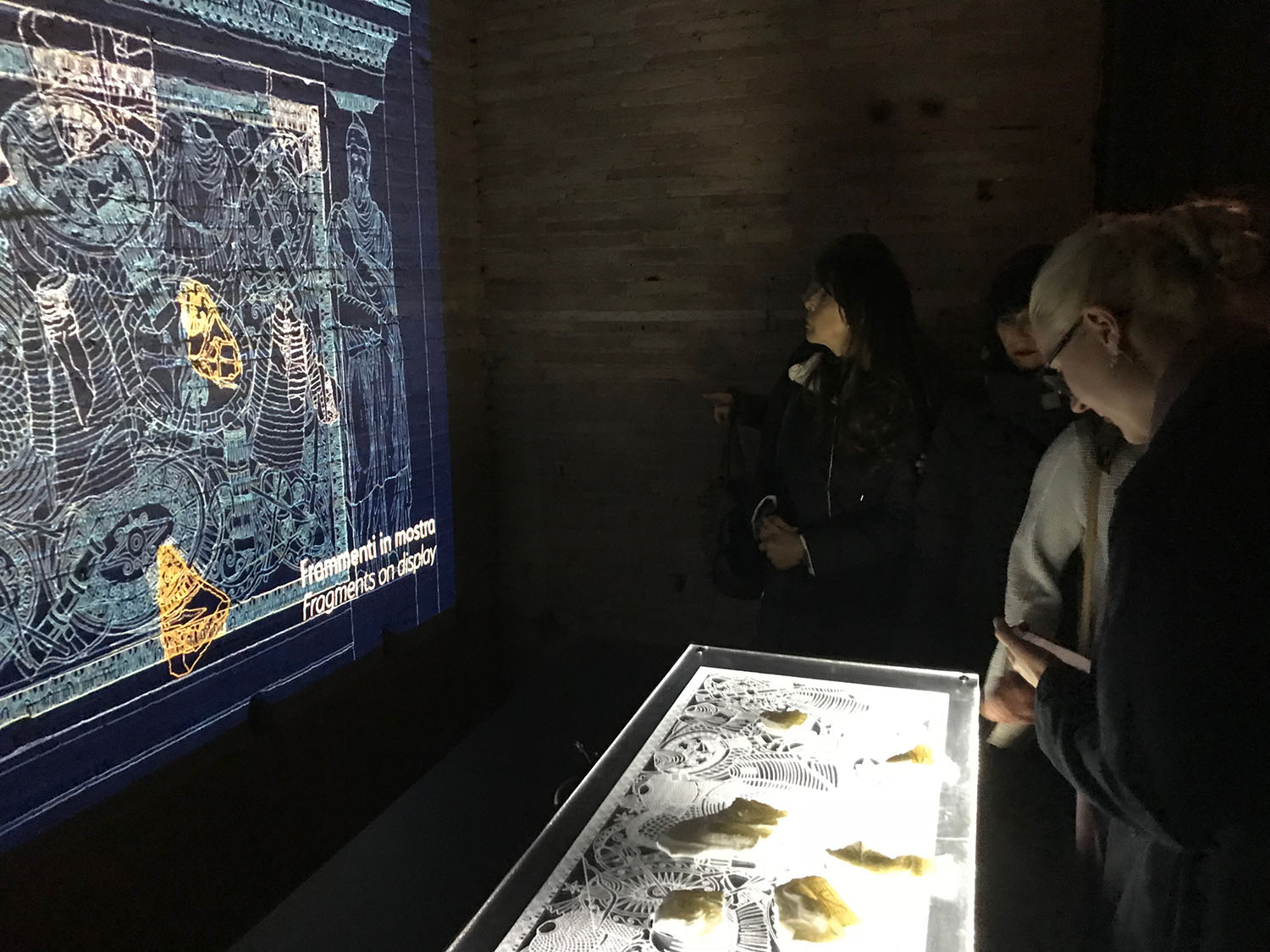 interface. Visitors are able to handle the artifacts, and trigger explanatory videos related to each fragment, which are displayed on an adjacent wall. The surface of the table is etched with a reconstructed overview of what the frieze may have once looked like, with gaps indicating where each fragment lays in orientation to the rest — a puzzle-like interface. When the 3D printed fragment is placed in the correct cutout, its video content is triggered, and the user is rewarded with explanations about the iconography used in that particular fragment, helping contextualize them within the overall narrative of the frieze.
interface. Visitors are able to handle the artifacts, and trigger explanatory videos related to each fragment, which are displayed on an adjacent wall. The surface of the table is etched with a reconstructed overview of what the frieze may have once looked like, with gaps indicating where each fragment lays in orientation to the rest — a puzzle-like interface. When the 3D printed fragment is placed in the correct cutout, its video content is triggered, and the user is rewarded with explanations about the iconography used in that particular fragment, helping contextualize them within the overall narrative of the frieze.
While TITA Trajan was envisioned with specific archaeological content in mind, the base template of the TITA table is flexible and can be easily revamped for a variety of content and displays as an open-source project.
THE EXHIBITION
This tangible-interaction, digital installation was exhibited at the Museum of the Imperial Forum / Trajan Market in Rome, Italy, as part of the commemoration exhibition honoring the 1900-year anniversary of Emperor Trajan’s death, and will be seen by hundreds of thousands of visitors. The table premiered at the grand-opening gala on November 17th, 2017, and was exhibited for the next year.
Principal Investigator
- Todd Berreth, Assistant Professor, Art and Design (NCSU)
- Maurizio Forte, Professor, Art, Art History and Visual Studies (Duke)
Current and Past Research Assistants
- Stephanie Huang, Art + Design (NCSU)
- Connor Shipway, Art + Design (NCSU)
